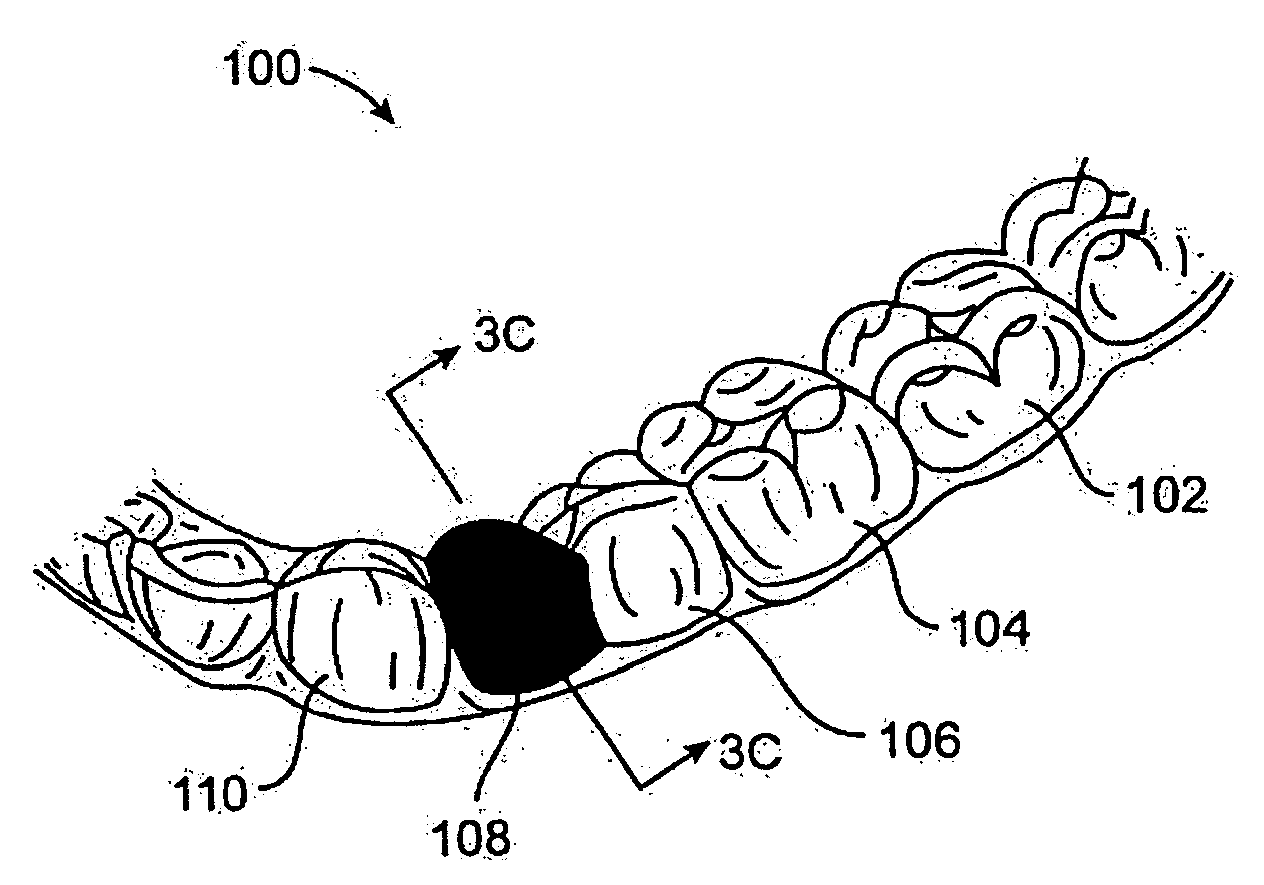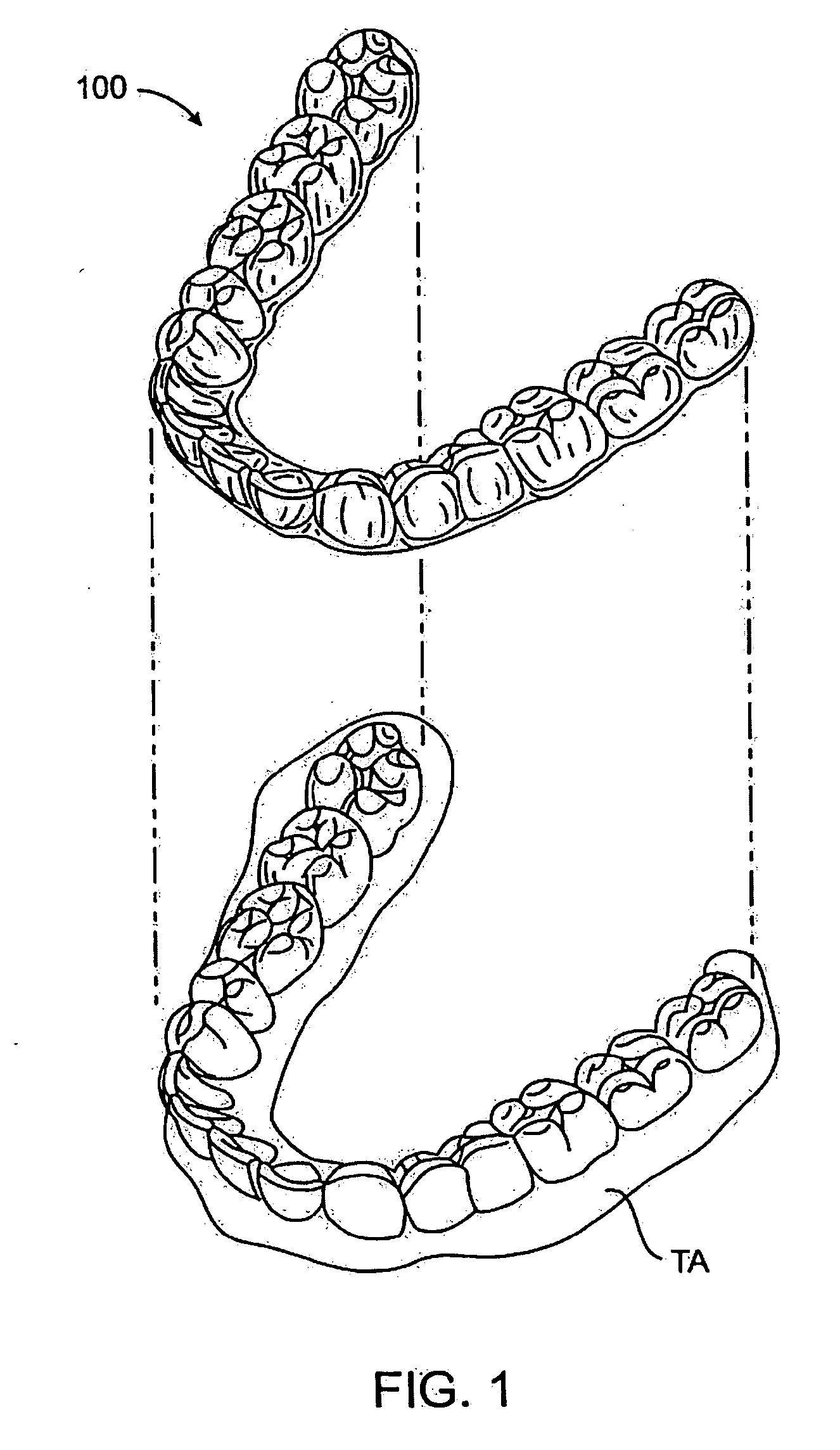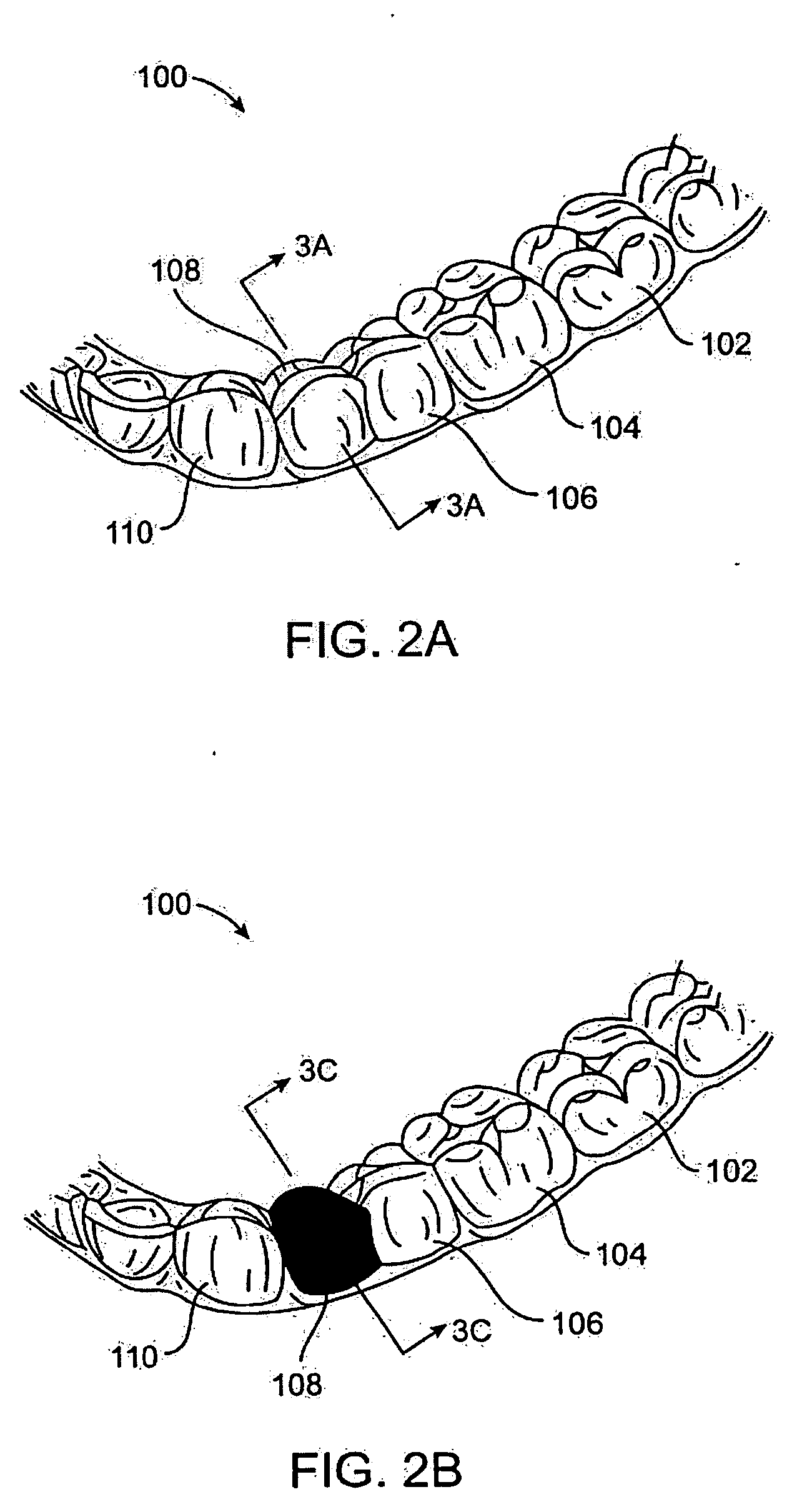Method and kits for forming pontics in polymeric shell aligners
a technology of polymer shell and aligner, which is applied in the field of orthodontics, can solve the problems of invisalign® system not providing for filling space or void which remains in the aligner, unable to meet the needs of patients, and inconvenient use, so as to facilitate the fabrication of dental pontics, efficient filling of target locations, and precise sizing and shaping of the ponti
- Summary
- Abstract
- Description
- Claims
- Application Information
AI Technical Summary
Benefits of technology
Problems solved by technology
Method used
Image
Examples
Embodiment Construction
[0033] The present invention provides improved methods and kits for the use of aligners 100 for positioning teeth in a tooth arrangement TA, as illustrated in FIG. 1. The aligner is a thin shell polymeric appliance of the type commercially available as part of the Invisalign® System available from Align Technology, Inc., Santa Clara, Calif. The planning and fabrication of such aligners is described in detail in issued U.S. Pat. No. 5,975,893, the full disclosure of which has previously been incorporated herein by reference. The aligners 100 are worn by a patient over the tooth arrangement for a sufficient time to rearrange the teeth to a desired subsequent tooth arrangement. A plurality of successive aligners are worn until an entire course of the treatment is completed.
[0034] As shown in FIG. 2A, the aligner 100 will include a number of individual tooth- shaped segments 102, 104, 106, 108, and 110. Each of these individual segments will be designed to fit over an individual tooth,...
PUM
 Login to View More
Login to View More Abstract
Description
Claims
Application Information
 Login to View More
Login to View More - R&D
- Intellectual Property
- Life Sciences
- Materials
- Tech Scout
- Unparalleled Data Quality
- Higher Quality Content
- 60% Fewer Hallucinations
Browse by: Latest US Patents, China's latest patents, Technical Efficacy Thesaurus, Application Domain, Technology Topic, Popular Technical Reports.
© 2025 PatSnap. All rights reserved.Legal|Privacy policy|Modern Slavery Act Transparency Statement|Sitemap|About US| Contact US: help@patsnap.com



